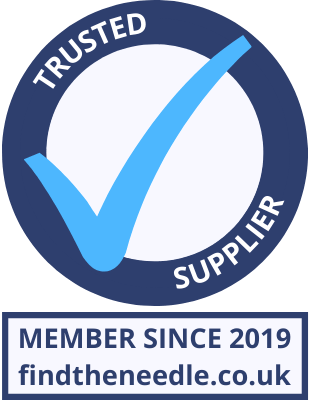 Add My Company
Add My Company
POP Or POS – What’s The Difference?

When it comes to retail signage, there are so many options it could make your head spin. Add in all the industry acronyms, and you might end up thoroughly confused about what you actually need. This is especially true for internal sales and promotions signs, which can generally be split into POP displays and POS signage. So today we’re going to clear up the confusion and explain what the difference is, and what you might want to use each one for.
What is a POP Display?
POP stands for Point-Of-Purchase, and these are displays you place throughout a store while customers are making their decision about buying a product, but before they have put the items in their basket. They can be anywhere within the shop, but are usually paced in high-traffic areas away from similar products for maximum impact.

There are a few different types of POP display you can use, including:
- Freestanding displays: Freestanding displays can be really attention-grabbing even from across the shop, and brands have a huge amount of room for creativity in terms of size, shape, colour and even form. The more creative, the better the engagement.
- Floor graphics: These displays are usually put directly in front of the shelves holding the product they’re promoting, so that customers can find them easily.
- Dump bins: They do exactly what they say on the tin! They are large metal baskets that are wrapped in promotional signage, and used to store smaller items. Great for packets of sweets, small toys, biscuits, you name it. Customers often pick these bits up as they are going between aisles, which makes them a great option to boost your add-on sales.
- Product dispensers: The perfect way for retailers to store and display small product volumes so that they look appealing and don’t get lost in the general noise of the main shelves.
- Interactive displays: These displays use TV or touch screens to hook in shoppers. And let’s be honest, most of us can’t resist a screen! They are a mix of traditional signage wrapped around a screen, displaying videos and demonstrations of your product.
- End caps: These displays sit at the end of aisles, either as a single display or two put back to back. These are fantastic for grabbing shoppers’ attention and drawing them to certain places in the shop.
- Shelf talkers: Printed cardboard or plastic that is placed on the shelves where retailers sell their products. This can be used to promote deals, give information on a product or just draw attention.
- Vendor shops: These are essentially a pop-up shop within a retail shop. Established brands that the retailer sells will use these to promote their products or even just a single item. They’ve grown a lot in popularity over the last few years, and they often yield fantastic results.


The Benefits of POP Displays
There are quite a few benefits to using POP displays in any retail environment. For one, they can be fully branded to make them eye-catching, helping customers to notice products and promotions they may not have seen otherwise. They’re versatile, since they can be made permanent, semi-permanent or temporary, and can be moved around the store as needed, boosting impulse purchases wherever they go. Many retailers will often use this type of display for seasonal promotions as well, boosting seasonal purchases as well. Finally, POP displays not only provide a good way of promoting products, but they’re also highly affordable, giving key products prominent in-store exposure without a high investment.


So What Is a POS Display?
POS stands for Point-Of-Sale, and while they can be similar to POP displays, there are some differences. Mainly, that POS displays are placed where the purchases are actually made – so at till points or in queue barriers. Their main aim is to promote offers and encourage impulse buys, usually for lower-value items that are more attractive as an impulse buy. So healthy snacks, water and other utilities in supermarkets (since the changes in regulations for food promotion a few years ago), face wipes and accessories in fashion shops and so on.
POS displays can be freestanding or physically attached to the checkout or shelving area, optimising space that wouldn’t be used otherwise and providing an easy upsell opportunity. They make products more visible to shoppers, and are a great branding tool for both brands and retailers, increasing in-store spend significantly.

At Signwrite Studios our in-house team are retail signage specialists, who are on hand to help you with all of your sign and printing needs. Whether that’s designing the display (and understanding what kind of display you need), printing it and even the manufacture and installation in your premises, we’re here to make sure you put your best foot forward. If you would like to know more, just get in touch with the team today.
For more information on POP Or POS – What’s The Difference? talk to Signwrite Studios Ltd

